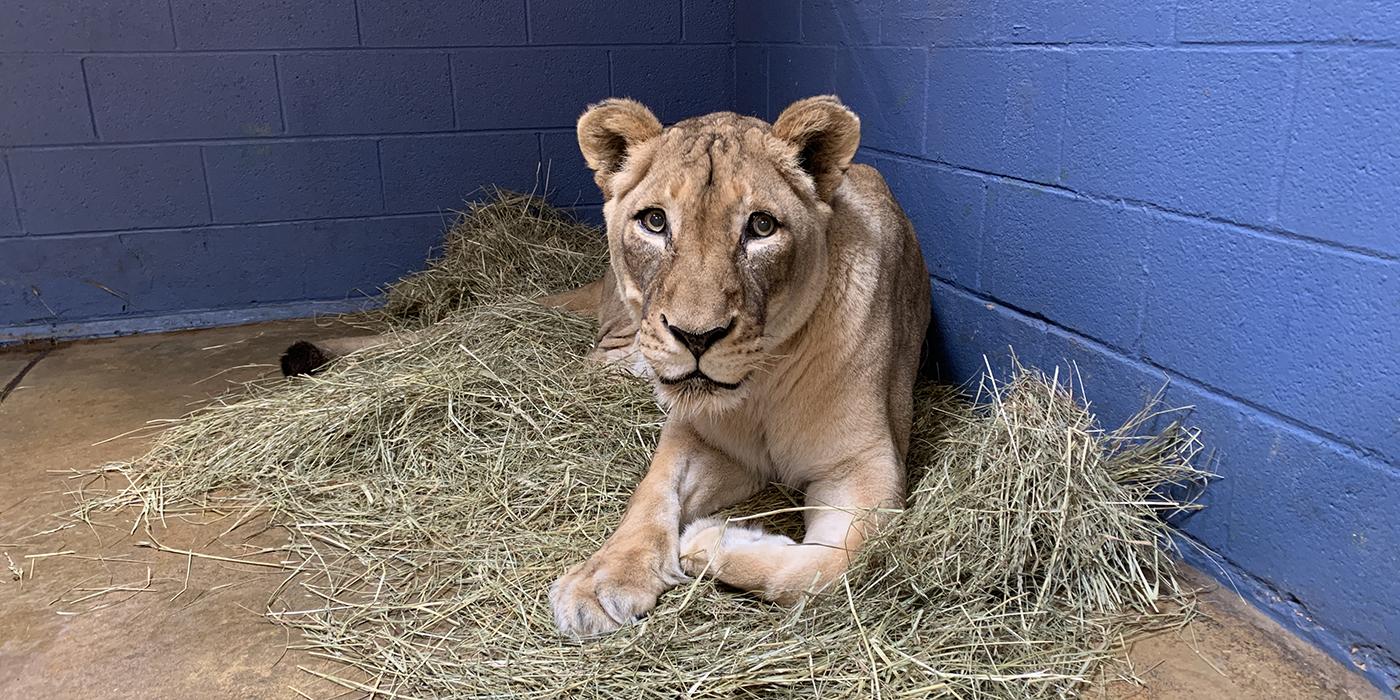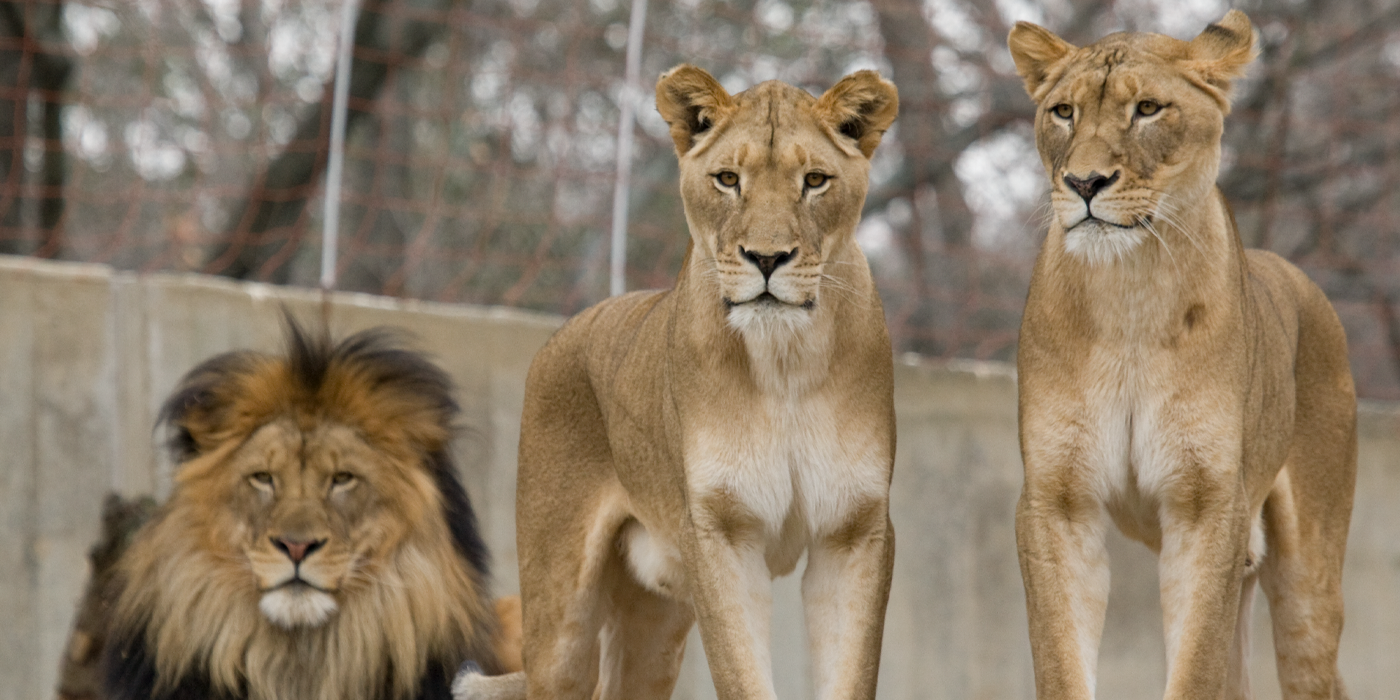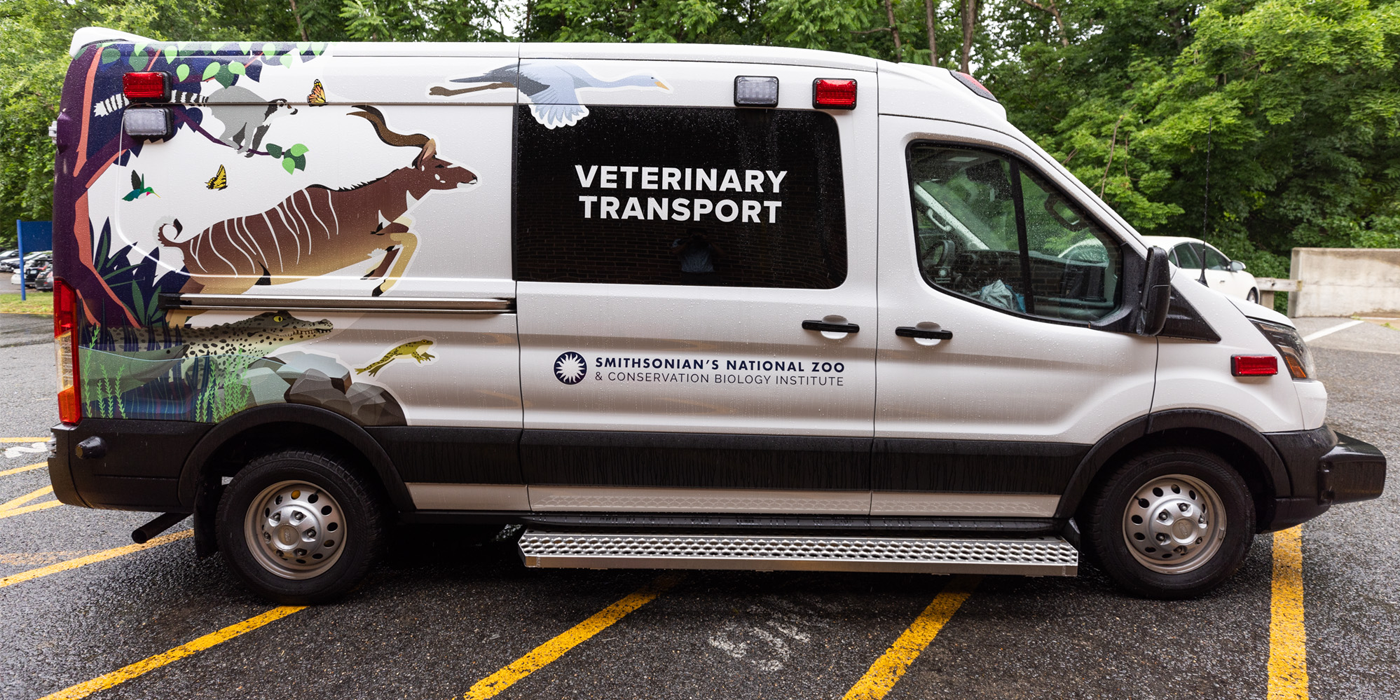Lion Update May 6, 2014
Four African lion cubs took a brisk paddle today and passed their swim reliability test. The cubs—three males and one female—were born at the Zoo March 2. All cubs born at the Great Cats exhibit must undergo the swim reliability test and prove that they are ready to be on exhibit. All four cats were able to keep their heads above water, navigate to the shallow end of the moat and climb onto dry land. Now that they have passed this critical step, the cubs are one step closer to being ready to explore the yard with their mother, 9-year-old Shera. The 10-week-old cubs will make their public debut in mid-June once all vaccinations have been administered.
"As keepers, it's our duty to take every precaution to ensure the cubs' survival," said Kristen Clark, an animal keeper at the Great Cats exhibit. "It's possible that a cub could be playing around and get knocked into the moat by a parent or sibling. We want to make sure that if they find themselves in that situation, they know how to pull themselves out of the water and onto shore."
Both cubs took the test under Clark's guard, as she gently guided them in the right direction. The shallow end of the moat is approximately 2.5 feet deep, which could present an obstacle for young cats. The side of the moat closest to the public viewing area is about 9 feet deep and is an essential safety barrier that effectively keeps the cats inside their enclosure.
In an adjacent exhibit, the two lion cubs born to mother Nababiep on January 24 explored their outdoor enclosure after passing their swim test in April. Starting Friday, May 9, keepers will decide on a day-to-day basis whether Naba's two cubs will spend time in the yard from 11 a.m. to 1 p.m. This decision will be based on weather and how the cubs adjust to being outdoors. The Zoo will continue to share the latest updates and photos on Facebook, Instagram and Twitter.
The Zoo received a recommendation to breed the lions from the Association of Zoos and Aquariums' Species Survival Plan for African lions. An SSP matches individual animals across the country for breeding in order to maintain a healthy, genetically diverse and self-sustaining population. Luke, the Zoo's 8-year-old male lion, sired all six cubs. The next step in building a pride at the Zoo is to introduce all nine lions into the same shared space. The first meeting between them took place April 24 and was captured on video.
"Introductions are always tense the first time you do them, but we always try to build on positive behaviors we've seen in the past," said Rebecca Stites, an animal keeper at the Great Cats exhibit. "All lions seemed interested in one another and their interactions were positive during "howdy door" and face-to-face meetings. We're gradually increasing the amount of time that the pride is together behind the scenes. Our hope is that they will all be on exhibit as one pride this summer."
The pride social structure makes lions unique among the great cats, many of which are solitary animals. African lion populations in the wild have dwindled by 30 percent during the past 20 years as a result of poaching, disease and habitat loss. They are considered a vulnerable species by the International Union for Conservation of Nature.
Related Species:


